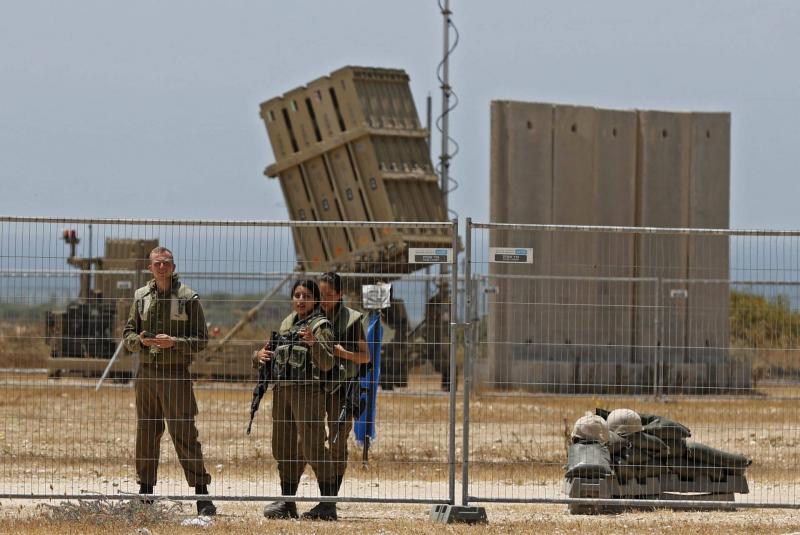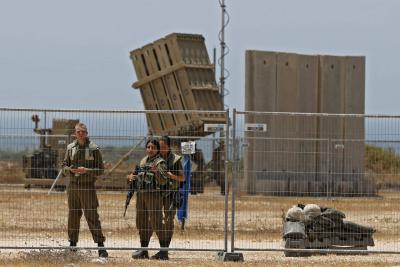The American "Washington Institute" reviewed the challenges and options facing Iraqi Shiite factions within the "Axis of Resistance" regarding their announced attacks against Israel, two months after they halted their attacks against U.S. forces in Iraq and Syria. The report noted that attention had shifted to the strikes against international coalition forces carried out by Iranian-backed Iraqi factions in Iraq, Syria, and Jordan, while these groups have also conducted a parallel attack campaign against Israel since the outbreak of the Gaza war in October 2023. However, the report considered that verifying these attacks was difficult, whether during the launch of missiles and drones or upon their arrival to their targets in Israel or their explosion en route.
According to estimates from the American institute, groups affiliated with the "Islamic Resistance in Iraq" claimed responsibility for 40 attacks on Israel since the first attack of its kind, which took place on November 2, 2023, against an unspecified target "in the Dead Sea." The report continued that on the same day, an Iranian-made "Quds" cruise missile was filmed in the Jordanian desert after crashing or being intercepted. It added that the latest attacks, specifically on April 1 of this year, involved the apparent launch of a cruise missile from Iraq towards a naval base in Eilat where Israeli submarines equipped with nuclear weapons are maintained.
The report noted that targeting points were often poorly defined, described only as "military target," "critical target," or "intelligence target." Overall, claims linking the attacks included 16 locations, with the only repeated locations being Eilat (9 attacks), the Golan Heights (7), Haifa (6), and Ben Gurion Airport (2). It added that during March, the "Islamic Resistance in Iraq" claimed responsibility for attacks on a number of targets, including at least 7 small airports and military air bases within Israel.
The report pointed out that the language used to describe the weapon systems employed was also vaguer than that used in strikes in Iraq and Syria, with phrases like "suitable weapons" appearing in about a quarter of the statements claiming the attacks on Israel. It continued that in regards to strikes on locations in Iraq and Syria, that phrase was often used alongside expressions indicating the use of specific weapons such as "Al-Aqsa 1" ballistic missiles, anti-aircraft missiles, or "Quds" cruise missiles.
It also noted that in about three-quarters of the attacks on Israel, unspecified model drones were used; however, "Shahed 101" attack drones appeared in the footage, indicating a mix of night and day launches that couldn’t be conclusively linked to the announced strikes. The report included a table showing fluctuations in the number of attacks but indicated that the numbers were generally rising, adding that in the latter half of February, after U.S. deterrent strikes in Iraq, the Resistance factions seemed to halt the majority of their attacks, but resumed them in March, targeting only Israel.
The report mentioned that the strike on Eilat on April 1 appears to have been executed from central or southern Iraq, likely utilizing another cruise missile from the "Quds" series, which has been frequently noted as being launched from central Iraq in recent months. It highlighted that the "Islamic Resistance in Iraq" used the term "suitable weapons" to refer to this strike, suggesting that this weapon likely took a less frequented route to Israel, possibly via the Iraqi-Saudi border and then through southern Jordan heading towards Eilat from the east. It added that the target was believed to be an Israeli naval facility where cruisers are docked and submarines are serviced.
The report explained that social media exchanges suggest that the "al-Nujaba Movement" is signaling responsibility for the Eilat attack and other similar strikes. It noted that a Telegram account called "Brothers of Jihad," which follows al-Nujaba, typically publishes advance or exclusive information regarding such attacks. Moreover, it mentioned that the "Sabereen News" channel, which is increasingly influenced by the "Hezbollah Brigades," stopped publishing about the attacks after the Brigades' Secretary General Abu Hussein al-Hamidawi announced a suspension of the "Resistance" attacks in late January.
Additionally, the report noted that significant figures linked to the Resistance indicated that al-Nujaba was responsible for launching the Eilat attack.
The report indicated that al-Nujaba and the "Sayyid al-Shuhada Brigades," classified as a terrorist organization by the United States, are the main or only members of the "Islamic Resistance in Iraq" still launching drones at Israel since February, confirming the commitment of Sayyid al-Shuhada Brigades to cross-border resistance activities instead of bolstering local authority within Iraq, and their strong ties to the Iranian Revolutionary Guard, which has provided them with long-range strike weapon systems. The report recalled that on January 24, the leader of Sayyid al-Shuhada, Abu Alaa al-Walayi, issued a statement announcing the beginning of the second phase of Iraqi resistance operations in solidarity with Gaza, emphasizing that these operations would focus on targeting Israeli ports and other strategic facilities.




